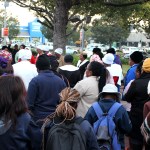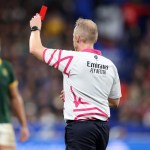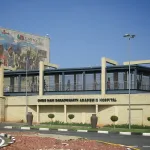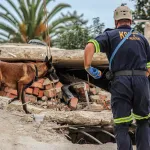With heightened racial tensions and debates about race devolving into no more than bitchy, snappy arguments, the 1994 “Rainbow Nation Project” seems to have fallen by the wayside. The Apartheid legacy and the racial segregation that defined it has one success that lives on to this day; we still have a strong attachment to the racial classifications Verwoerd and his ilk devised.
This reality is no better illustrated than through a column by a 22-year-old young lady out of Cape Town entitled, “Being coloured in a black and white South Africa”. Now in dealing with what she asserts in her column, I will not be so presumptuous as to define what it means to be Coloured, but I do challenge her definition – a definition that has seemingly become widely accepted – which lends credence to the notion that there is homogeny among a people characterised by their mixed race heritage.
She, as so many have, criticises the notion of the Rainbow Nation, critiquing the fact that it was assumed that the hatchet would be buried immediately after more than 340 years of racial segregation and oppression and that we would all embrace each other as one big happy South African family post-Apartheid. Naïve, perhaps; well intended, definitely. As tough as it is to believe, when Madiba and the African National Congress took over government in 1994, when they drafted the Interim Constitution a year prior and finalised it in 1996, they had a choice; we could have brought justice down on the benefactors and beneficiaries of Apartheid or we could forgive, reconcile and try to build a new national identity. We chose the latter option, but it seems that the height we reached in 1995 just could not be maintained, despite SA winning the Rugby World Cup for a second time 12 years later.
The next issue she addresses is the issue of voices in the public domain on race, specifically the lack of the proverbial Coloured voice and the dominance of Black and White voices. Although not directly said, the perpetual refrain one hears from this is “Under Apartheid we were not White enough and under the new dispensation we are not Black enough.”
The issue with this is the assumption that challenges facing the Coloured community is somehow unique to the Coloured community, but that assumption is based on a fallacy, a point I will return to. The issue first issue that needs to be dealt with is the source of this belief. Under Apartheid, Coloured and Indian people, despite the Group Areas Act, geographic placement and an explicit inferior positioning in law and in terms of civil liberties, unlike their Black counterparts were afforded limited rights as citizens of the Republic of South Africa. Black people became immigrants in their own country, stripped of South African citizenry and confined to artificial countries – the old Bantustans or Transkei, Bophuthatswana, Venda, and Ciskei, known as the TBVC states. Hence, the need for a passport, or “passes” as they travelled through the republic, more specifically the white areas within the republic.
As “non-citizens” of SA, it was easy to exploit Black people as mine workers, gardeners, domestic workers and factory hands. So the system was designed in such a way that you had White people at the very top as the “baas”, Black people at the bottom as the “boys” and “girls” and Coloureds and Indians as the buffer, the convenient “baas-boy”. This created an ugly precedent, one that cast Coloured people as “inbetweeners”, never good enough to be the boss, but a little more privileged than the bottom-rung servant.
It was somewhat convenient. Despite the oppression of the previous government, things were not as rough for Coloured and Indian folk as they were for Black folk and so if you kept your head low and did not cause too much trouble with ideas of revolution, you barely got by. Now however, resources have been spread thin. The black majority regained citizenry in the land of their birth and the damage of the past needs to be rectified. Now that our needs have been equated to that of the Black majority, things have become a little uncomfortable for Coloured folk and just as the Black masses are disgruntled and taking to the streets in mass protest, we too are we angered as service delivery is seemingly not happening quickly enough. Tougher yet because we no longer have the front row seats for table scraps.
The author of the column also makes the assertion that Coloured culture is ignored and that popular media portrayals are based on stereotypes and look for the lowest common denominator in search of entertainment value. This point has truth to it, but what it fails to recognise is that there is an entire litany of analysis of advertising and entertainment aimed at Black people. Questions are being asked as to why Black gogos have to dance for airtime or shout in excitement because this washing powder leaves their laundry so much whiter than the other! What worries me about this example is that we, as people; Coloured, Black, even White Afrikaans persistently draw on lowest denominator stereotypes to elicit a positive response through entertainment. Think of “Molly en Wors”, “Colour TV” – which, mind you, was supposed to be a show for Coloured people, presented by Coloured people, produced by Coloured people, but drew on every offensive stereotype in the book – or think of a famous burger company that had to play on the Indian stereotype for its latest spicy burger offering.
The point is that we play on stereotypes, we laugh and enjoy them. That is why Leon Schuster is the most successful movie director and producer in SA to this day. Some might say that this is good because we do not take ourselves too seriously and can actually laugh at ourselves, but we are perpetuating these roles and ideas and capitalising on them.
As for the homogeny of Coloured people, this is the biggest fallacy of all! Go to what is regarded as a Coloured neighbourhood, you will find people that could easily pass for White, Black, Indian, Somali, even Chinese for goodness sake. Why? Because Coloured people are of mixed race origins, some tracing their roots to the Khoisan, others to Malaysian and Indonesian slaves and some to Black people who had babies with Whites, Indians and Chinese people. So usually when heritage day comes around, I am caught between wearing a Scottish kilt, Zulu traditional gear, Afrikaner Great Trek Khaki or whatever else you could imagine. As for food; do I take the beef stroganoff, biryani, pap and Mopani worms or pork chow mein? Whereas Afrikaans is seen as the “official language” for Coloured folk, they mostly speak English in KwaZulu-Natal and a different brand of Afrikaans in the Western Cape. So I think homogeny is a moot argument.
The concerns Coloured folk have are akin to the problems of all communities in SA. Teenage pregnancy, drug abuse among the youth, high unemployment rates and poor education affect all communities, though perhaps to a different degree. A national plan to tackle these scourges is needed, perhaps one that is community focused, where gangsterism is prioritised in one neighbourhood and skills development and employment is focused on in another. Racial classification should not be the determining factor but the needs of the community. Take the gangsterism issue on the Cape Flats, it doesn’t need a Coloured solution, what it needs is a community to testify and speak out against family members, neighbours and friends who are gangsters and for a strong provincial government to do more in terms of policing rather than wanting to call in the military. A similar solution would work for the people in Protea South in Soweto.
Operation “Nation Building South Africa” is challenging and difficult because we are so different and have the unpleasant post-Apartheid hangover to shake off. But it can only work if we address it as the South African nation rather than the “Venda nation”, the “Zulu nation” or – sorry to disappoint you Steve Hofmeyr – the “Afrikaner nation”. Like it or not, we are all here to stay and at some point the damn hatchet needs to be chucked aside and we need to fix the kak of the past or we will have perpetual disenfranchisement in all corners and 100 years from now our legatees will be moaning about the same nonsense we are moaning about today. DM
















